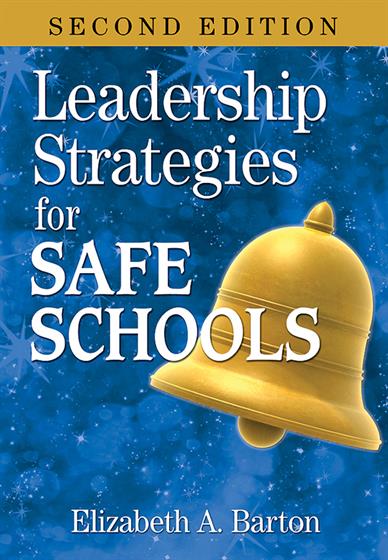Introduction
The Problem of School Safety
The Need for a Proactive Approach to School Safety
Strategies for Creating Safe Schools
Organization of the Book
What’s New in the Second Edition
1. Creating a Safe School
Defining a Safe School
Persistently Dangerous School Indicators
Indicators of a Safe School
Factors Associated With School Violence
Characteristics of Youth Offenders
2. Setting the Foundation
The School Safety Team
Composition of the School Safety Team
The Role of Assessment in School Safety
Developing the School Safety Assessment Tool
Content of the School Safety Assessment Tool
Assessment Areas
Area 1 – Cultural and Personal Characteristics
Area 2 – Knowledge, Skills, and Attitudes
Area 3 – Social Environment
Area 4 – Political Environment
Physical Environment
Techniques for Measuring School Needs
The Argument for Focus Groups
School Safety Plan
Environmental Safety
Student Education
School Policies and Procedures
School-Community Partnerships
Developing School Safety Plan Strategies
Vision
Statement of Need
Goals and Objectives
Timeline for Implementation of the School Safety Plan
Procedures for Plan Review
Implementing the School Safety Plan
Evaluating Safety Plan Effectiveness
3. Positioning Character Development in School Curricula
Effects of Character on Safe Schools
Character Education
History of Character Education
The Character Education Controversy
Current Trends in Character Education
Moral Content vs. Moral Thought Processes
Cognitive Development and Character Education
Connecting Character Education to Conflict Resolution Education
Strategies for Implementing Character Education
Curriculum
Environment
Offering Opportunities for Student Action
Potential Pitfalls in Character Education
Successful Character Education Programs
4. Implementing Conflict Resolution Education
The Fourth R: Resolution
Goals of Conflict Resolution Education
Building Students’ Self-Awareness
Self-Esteem
Anger Management
Perspective Taking and Empathy
Empathy and Perspective Taking
Enhancing Students’ Interpersonal Interactions
Communication Skills
Active Listening Techniques
Paraphrasing
Clarification
Reflection
Encouragement and Validation
Summary
I Messages
Assertiveness
Constructive Conflict Resolution Strategies
The Nature of Conflict: Theoretical Background
Approaches to Conflict Resolution Education
Process Approach
Curriculum Infusion Approach
Language Arts
History and Geography
Math
Music and Art
Professional Development Requirements of Conflict Resolution Education
Involving Family Members in Conflict Resolution Education
Models of Effective Conflict Resolution Education Programs
5. Peer Mediation Programming
Students Helping to Create Safe Schools
Goals and Process of Mediation
Theoretical Foundation of Peer Mediation
School Staff Involvement in Peer Mediation Programs
Implementing Peer Mediation Programs
Selecting Students for Peer Mediation Training
Selecting Mediation Program Coordinators
Training Peer Mediators
Conducting the Peer Mediation Program
Mediation Referrals and Requests
Mediation Location and Time
Potential Problems and Solutions Encountered in Peer Mediation Programming
Creating Family and Community Partnerships
Application of the Mediation Model
Models of Effective Peer Mediation Programming
6. Integrating Diversity Into Conflict Resolution Programs
Safe Schools Appreciate Differences
Goals of Diversity Education
Connections Between Diversity and Conflict Resolution Education Programs
Effect of Culture on Communication Skills
Communication Skills and Diversity Education
Conflict Resolution Strategy Selection
Strategies for Diversity Education
Cooperative Learning Groups
Direct Anti-bias Education
Circle Game Activity
Verbal and Nonverbal Cues Activity
School as a Culture Exercise
Mythdrama Technique
Cultural Connections
Discussing Differences
Guidelines for Implementing Diversity Education
Positive Techniques
Potential Pitfalls to Avoid
Models of Effective Diversity Education Programs
7. Evaluating School Safety Programs
Evaluation: A Necessary Component of School Safety
The Role of the Evaluator
What Should the Evaluation Measure?
Evaluating Student Education Programs
Evaluating Policies and Procedures
Evaluating School-Community Partnerships
Evaluating the Environment
Mechanisms for Evaluating School Safety Programs
Process Evaluation vs. Outcome and Impact Evaluation
Appendix
A: Sample School Safety Handbook Table of Contents and General Emergency Management Plan
B: Sample School Safety Information Policy Agreement
C: Resources
References
Index



